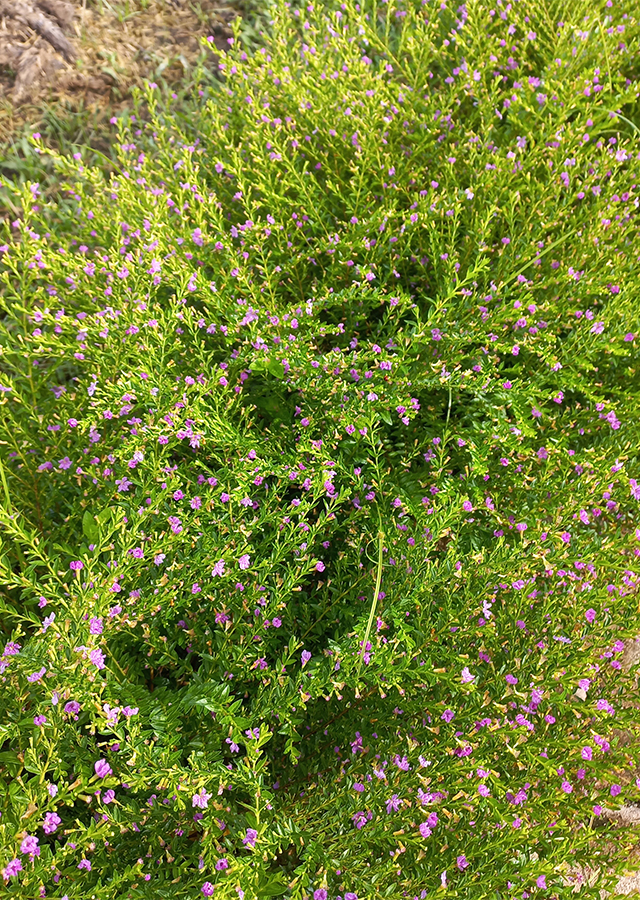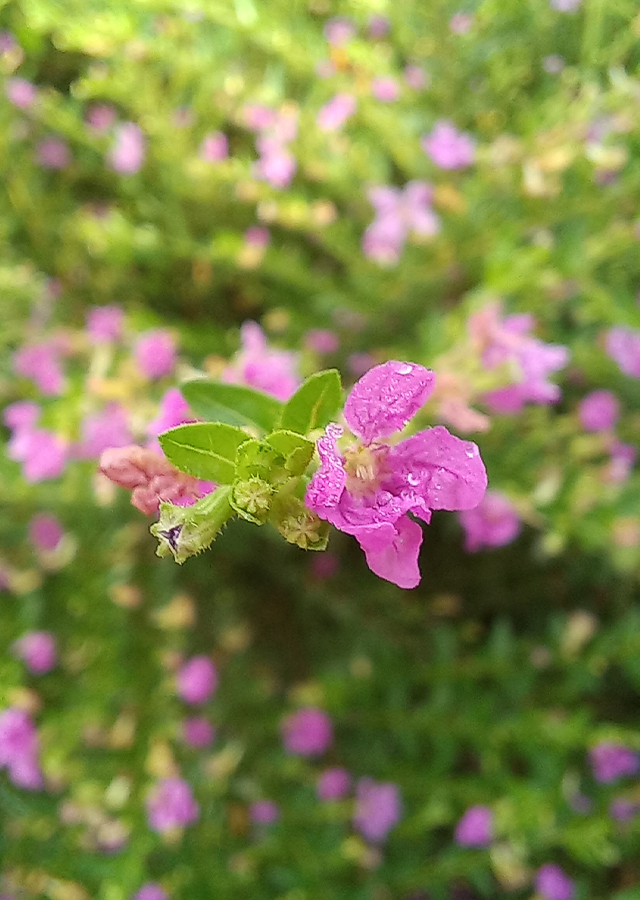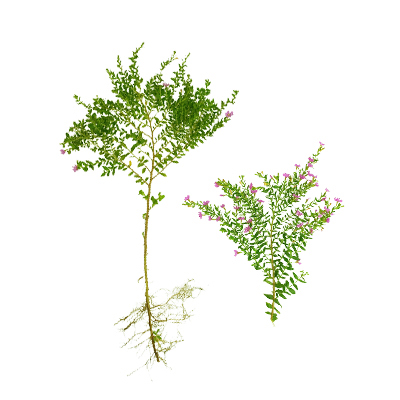False Heather
Cuphea hyssopifolia Kunth
Lythraceae
Location in our garden
Principal



Synonym
Cuphea hyssopifolia var. brachyphylla Griseb.
Cuphea rivularis Seem.
Cuphea sunubana Lourteig
Habitus
Shrubs. A much-branched, erect to spreading, evergreen shrub; it can grow 20 - 70 cm tall
Part Used
Leaves
Flowers
Stem
Growing Requirements
Full Sunshine
Need Shade
Habitat
Riverbanks
Forest
Terrestrial
Overview
Native from Mexico to Panama. The plant is harvested from the wild for local use as a medicine and insecticide. It is often grown as an ornamental in the tropics - in the temperate zone it can be grown as a summer bedding plant.
Vernacular Names
Romerito (Spanish), Corail (French), Cuféia (Brazil), Falsches Heidekraut (German), Isopskufea (Swedish)
Agroecology
Found in banks of rivers and streams, moist forests; at elevations up to 1,500 m. Species in this genus generally prefer a position in full sun, but are tolerant of partial shade. They generally grow best in average, medium moisture, well-drained soils.
Morphology
- Roots - taproot.
- Stems - green, many branched, covered with fine and soft hair.
- Leaves - opposite, narrowly lanceolate, 10-35 × 1-8 mm. Solitary flowers grow from the leaf axils along the branches.
- Flowers - each flower has 6 pink, purple or white petals (3-3.5 mm long) emerging from a green floral tube (5-8 mm long). The calyx teeth are triangular and the calyx may be glabrous or with a few stiff hairs.
- Fruits - 3-lobed capsules containing 5-8 seeds.
- Seeds - reddish brown, suborbicular.
Cultivation
Propagated by seeds - can be sown in situ. Germination usually takes a few weeks because of the hard seed coat.
Chemical Constituents
Phenolic compounds (valoneic acid dilactone; 1,3−O−digalloyl-4-,6-hexahydroxydiphenoyl-β-D−4C1-glucopyarnose; gallic acid; genistein-7-O-β-D-4C1-glucopyranoside; myricetin−3 O−β-D−4C1-glucopyranoside; 3, 4, 5-trimethoxy benzoic acid; vanillic acid), cuphiin D1, cuphiin D2, oenothein B, woodfordin C, diterpenes and flavonoids (friedelan-3β-ol; ursolic acid; methyl error; quercetin; quercetin-3-O-α-rhamnopyranoside; 1,2, 3,4,6-penta-O-galloyl-β-D-glucose; and mannitol).
Traditional Medicinal Uses
- The leaves and flowers are used as a tonic and in the treatment of fevers and coughs.
- The plant is a rich source of phenolic compounds which have been shown to have a strong antioxidant activity.
Part Used
Reference Sources
- Fern, Ken. Useful Tropical Plants. (2021). Cuphea hyssopifolia. https://tropical.theferns.info/viewtropical.php?id=Cuphea+hyssopifolia. 15-12-21.
- Cabi. Cuphea hyssopifolia. https://www.cabi.org/isc/datasheet/118210. 15-12-21.


